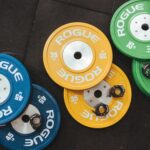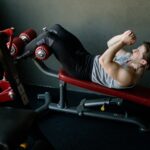Are you a beginner looking to kickstart your fitness journey without the need for expensive gym memberships or fancy workout equipment? Bodyweight exercises are the perfect solution for you. They are simple, effective, and can be done anywhere, anytime. In this comprehensive guide, we’ll explore bodyweight exercises for beginners and help you create a beginner-friendly bodyweight exercise routine that will set you on the path to a healthier, stronger you.
Why Choose Bodyweight Exercises?
Before we dive into the world of bodyweight exercises for beginners, let’s understand why they are an excellent choice:
1. Cost-Effective
One of the most significant advantages of bodyweight exercises is that they require no special equipment. You won’t need to invest in expensive dumbbells, machines, or gym memberships. All you need is your own body, making it a budget-friendly fitness option.
2. Convenience
Bodyweight exercises can be performed anywhere, making them incredibly convenient. Whether you’re at home, in a park, or even on vacation, you can squeeze in a quick workout without any hassle.
3. Versatility
There is a wide variety of bodyweight exercises to choose from, targeting different muscle groups and fitness goals. This versatility allows you to tailor your routine to meet your specific needs and preferences.
4. Low Risk of Injury
Bodyweight exercises are generally low-impact, reducing the risk of injury compared to heavy weightlifting or high-intensity exercises. This makes them ideal for beginners who are just starting their fitness journey.
Getting Started: Basic Bodyweight Exercises
Now that you know why bodyweight exercises are a fantastic choice, let’s explore some basic exercises suitable for beginners:
1. Push-Ups
Push-ups are a classic upper body exercise that strengthens your chest, shoulders, and triceps. Start with your hands shoulder-width apart, body in a straight line, and lower yourself toward the ground before pushing back up. If regular push-ups are too challenging initially, you can perform them with your knees on the ground for added support.
2. Bodyweight Squats
Squats are excellent for working your lower body, including your quadriceps, hamstrings, and glutes. Stand with your feet shoulder-width apart, lower your hips back and down as if sitting in a chair, and then return to a standing position.
3. Planks
Planks are fantastic for strengthening your core muscles. Begin in a push-up position, but with your weight supported on your forearms. Keep your body in a straight line from head to heels, engaging your core muscles, and hold this position for as long as you can.
4. Lunges
Lunges work your legs and improve balance. Take a step forward with one foot and lower your body until both knees are bent at a 90-degree angle. Then, step back and repeat with the other leg.
5. Leg Raises
Leg raises target your lower abdominal muscles. Lie flat on your back, with your hands under your hips for support, and lift your legs straight up towards the ceiling. Lower them back down without letting them touch the ground, and repeat.
Creating Your Beginner’s Bodyweight Exercise Routine
Now that you’re familiar with some basic bodyweight exercises, it’s time to create a beginner-friendly routine that combines these exercises into a balanced workout.
But first remember, it’s essential to start slowly and gradually increase the intensity and duration of your workout as you become more comfortable with these exercises. Listen to your body, and if you experience any pain or discomfort, stop immediately and consult a fitness professional or healthcare provider.
Here’s a sample routine to get you started:
Warm-Up (5-10 minutes)
- Jumping jacks: 2 minutes
- Arm circles: 2 minutes
- Leg swings: 2 minutes
Main Workout (20-30 minutes)
- Push-ups: 3 sets of 10-12 repetitions
- Bodyweight squats: 3 sets of 12-15 repetitions
- Planks: 3 sets of 20-30 seconds
- Lunges: 3 sets of 10-12 repetitions per leg
- Leg raises: 3 sets of 10-12 repetitions
Cool Down (5-10 minutes)
- Hamstring stretch: 2 minutes
- Quadriceps stretch: 2 minutes
- Shoulder stretches: 2 minutes
Tips for a Successful Bodyweight Fitness Journey
As you embark on your bodyweight exercise journey, here are some valuable tips to keep in mind:
1. Consistency Is Key
Consistency is vital in any fitness routine. Set aside dedicated time each day or week for your workouts, and stick to your schedule as closely as possible.
2. Proper Form
Maintaining proper form during exercises is crucial to prevent injuries and achieve maximum results. If you’re unsure about your form, consider seeking guidance from a fitness trainer or using instructional videos.
3. Progression
As you become more comfortable with your routine, challenge yourself by increasing the number of repetitions or sets, or by trying more advanced variations of the exercises.
4. Stay Hydrated and Eat Well
Proper hydration and nutrition are essential for your overall health and fitness progress. Drink plenty of water and focus on a balanced diet that includes lean proteins, whole grains, fruits, and vegetables.
5. Rest and Recovery
Allow your body to rest and recover between workouts. Adequate sleep and rest days are essential to prevent burnout and promote muscle recovery.
6. Seek Support
Consider working out with a friend or joining a fitness class or community for added motivation and support on your fitness journey.
Conclusion
Embarking on a bodyweight exercise routine for beginners is a fantastic way to improve your strength, flexibility, and overall fitness. By choosing these equipment-free exercises, you’re not only saving money but also gaining the convenience of working out wherever and whenever you like. Remember to start slowly, maintain proper form, and stay consistent. With dedication and effort, you’ll be well on your way to achieving your fitness goals and enjoying a healthier, more active lifestyle. So, get moving and embrace the power of bodyweight exercises!
FAQ
1. Are bodyweight exercises suitable for complete beginners with no prior fitness experience?
Absolutely! Bodyweight exercises are an excellent choice for beginners because they are low-impact and can be easily adapted to different fitness levels. Start with basic exercises and gradually increase the intensity as you become more comfortable.
2. Do I need any special equipment or a gym membership to do bodyweight exercises?
No, that’s the beauty of bodyweight exercises. You don’t need any special equipment or a gym membership. All you need is your own body, making it a cost-effective and convenient fitness option.
3. How often should I do bodyweight exercises?
It’s recommended to aim for at least 150 minutes of moderate-intensity aerobic activity or 75 minutes of vigorous-intensity aerobic activity per week, along with muscle-strengthening activities on two or more days a week. You can break this down into multiple shorter sessions to fit your schedule.
4. Can bodyweight exercises help with weight loss?
Yes, bodyweight exercises can contribute to weight loss when combined with a balanced diet. They help build lean muscle, which increases your metabolic rate, aiding in the calorie-burning process.
5. I’m worried about getting bored with the same exercises. How can I keep my routine interesting?
Variety is key to staying engaged. You can change up your routine by incorporating different bodyweight exercises, trying new variations, or even adding some cardio elements like jumping jacks or mountain climbers.
6. Is it essential to warm up and cool down when doing bodyweight exercises?
Yes, warming up before your workout and cooling down afterward are crucial for preventing injuries and promoting muscle recovery. Spend 5-10 minutes on each to prepare your body and aid in recovery.
7. How can I ensure I’m doing these exercises with proper form?
Proper form is essential to prevent injuries and maximize results. Consider working with a fitness trainer or using instructional videos to learn and maintain proper form. Starting with the basics and progressing slowly can also help you build a strong foundation.
8. I have a medical condition or injury; can I still do bodyweight exercises?
It’s essential to consult with a healthcare provider before starting any new exercise routine, especially if you have a medical condition or injury. They can provide guidance on exercises that are safe and suitable for your specific situation.
9. What should I do if I hit a plateau in my progress?
Plateaus are common in fitness. To overcome them, try increasing the intensity of your workouts, adding more sets or repetitions, or exploring more challenging variations of the exercises. It’s also a good idea to reassess your diet and sleep habits.



